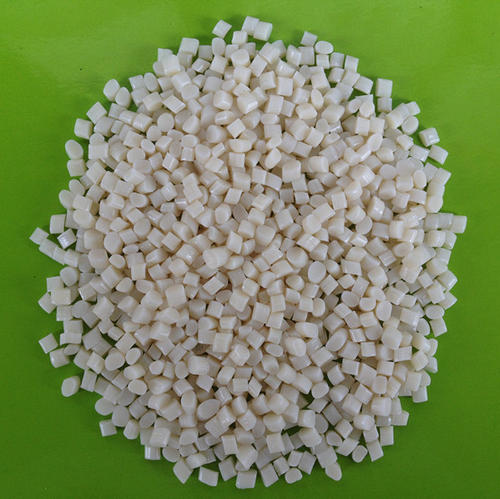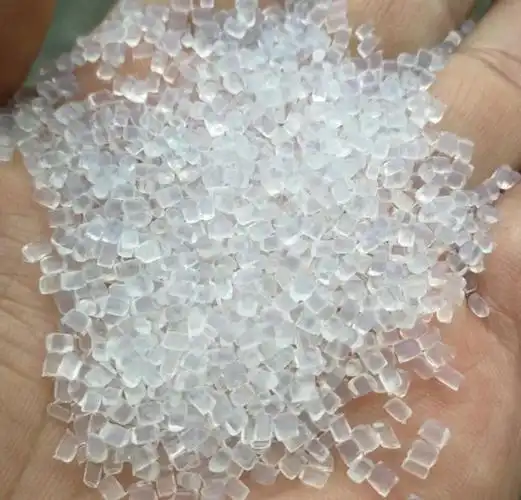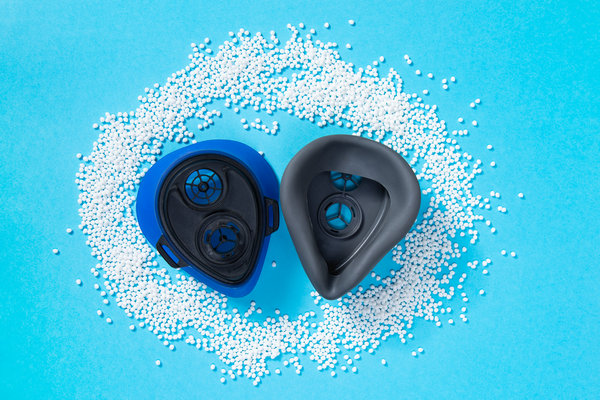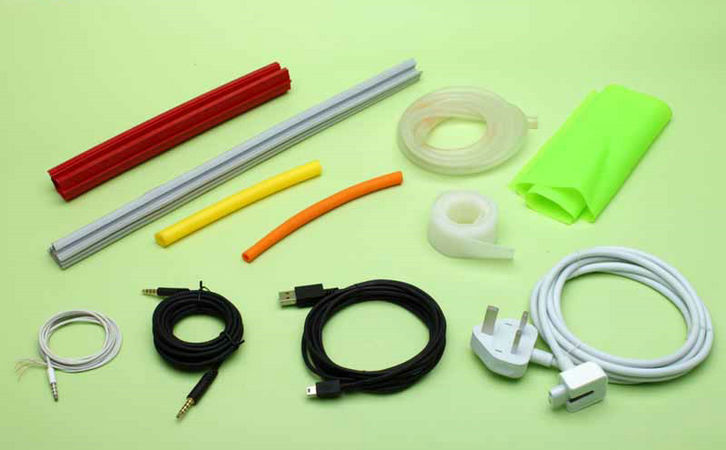Having spent over a decade in the plastics industry, particularly working with thermoplastic elastomers (TPEs), I’ve tackled countless challenges in overmolding applications. One of the trickiest issues I’ve encountered is ensuring strong adhesion between TPE and metal substrates. Poor adhesion can lead to delamination, reduced part durability, or even complete failure in applications like tool grips, medical devices, or automotive components. If you’re struggling with TPE peeling off metal or inconsistent bonding, this article is for you. Drawing from my hands-on experience and industry insights, I’ll walk you through practical, proven strategies to enhance TPE-metal adhesion while keeping things straightforward and actionable.

Why Is TPE-Metal Adhesion So Challenging?
TPEs are prized for their flexibility, soft touch, and processability, but bonding them to metal isn’t always straightforward. Metals like steel, aluminum, or brass have smooth, non-porous surfaces that don’t naturally bond well with TPEs, which are typically non-polar materials. The goal is to create a strong, durable interface—whether mechanical, chemical, or a combination of both—that holds up under stress, temperature changes, or environmental exposure.
In my early years, I worked on a project involving TPE overmolded onto stainless steel for a medical tool handle. We kept seeing the TPE layer peel off during testing, which was frustrating for both the team and the client. After digging into the problem, we realized that surface preparation and material compatibility were the culprits. That experience shaped my approach to TPE-metal overmolding, and I’m excited to share the lessons I’ve learned.
Key Factors Affecting TPE-Metal Adhesion
Before diving into solutions, let’s break down why adhesion issues happen. From my time on the production floor, I’ve identified several factors that influence bonding:
Surface Energy Mismatch: Metals have high surface energy, while TPEs are often low-energy materials, making natural adhesion difficult without surface modification.
Surface Contamination: Oils, dust, or residues on the metal can weaken the bond.
TPE Formulation: Not all TPEs are designed for overmolding onto metal. Some grades lack the polarity or additives needed for strong adhesion.
Processing Conditions: Incorrect melt temperature, injection pressure, or mold temperature can prevent proper wetting and bonding.
Mechanical Interlocking: Without sufficient surface texture or design features, the TPE may rely solely on chemical bonding, which can be weak.
Understanding these factors helped me develop a systematic approach to improving adhesion, which I’ll outline below.
Strategies to Enhance TPE-Metal Adhesion
Based on my experience and industry best practices, here are actionable ways to improve TPE adhesion to metal, organized into four key areas: material selection, surface preparation, mold design, and processing optimization.

1. Choose the Right TPE Grade
Not all TPEs are created equal when it comes to overmolding onto metal. Selecting a grade optimized for adhesion is a critical first step.
Use Adhesion-Enhanced TPEs: Many suppliers offer TPE grades specifically formulated for bonding to metal, often with polar additives or modified polymer chains. For example, SEBS-based TPEs with maleic anhydride grafting can significantly improve adhesion to metals like aluminum or steel. I once switched to a grafted SEBS grade for an automotive component, and it eliminated delamination issues.
Work with Suppliers: Collaborate with your TPE supplier to identify grades with proven metal adhesion. They can provide data on bond strength and recommend formulations for your specific metal substrate.
Avoid Overusing Fillers: High levels of fillers like calcium carbonate can reduce adhesion by altering the TPE’s flow and wetting properties. Keep filler content below 20% unless absolutely necessary.
2. Optimize Metal Surface Preparation
The metal surface is just as important as the TPE. Proper preparation creates a foundation for strong bonding, either through mechanical interlocking or chemical compatibility.
Clean the Surface Thoroughly: Remove oils, grease, or contaminants using degreasers like isopropyl alcohol or acetone. I’ve found ultrasonic cleaning to be particularly effective for complex metal inserts. In one project, switching to ultrasonic cleaning reduced adhesion failures by 30%.
Increase Surface Roughness: Mechanical treatments like sandblasting (using 80–120 grit aluminum oxide) or chemical etching create micro-textures that enhance mechanical interlocking. For a tool grip project, sandblasting the steel insert improved bond strength enough to pass rigorous pull tests.
Apply Adhesion Promoters: Primers or plasma treatments can increase the metal’s surface energy, making it more compatible with TPE. Plasma treatment, in particular, is effective for stainless steel and aluminum, as it introduces polar groups to the surface. I’ve used plasma-treated inserts for medical devices with excellent results.
Use Adhesive Coatings: For demanding applications, apply a thin layer of adhesive (e.g., Chemlok or similar) to the metal before overmolding. This creates a chemical bridge between the TPE and metal. Be sure to test compatibility, as some adhesives can degrade under high molding temperatures.
3. Optimize Mold Design
Mold design plays a big role in ensuring the TPE flows and bonds properly to the metal insert.
Ensure Proper Insert Placement: Use fixtures or pins to hold metal inserts securely in the mold, preventing movement during injection. Misaligned inserts can lead to uneven TPE coverage and weak bonding.
Design for Mechanical Interlocking: Incorporate features like grooves, undercuts, or perforations on the metal insert to give the TPE something to “grip.” In a consumer electronics project, adding small perforations to the metal substrate increased bond strength by 25%.
Optimize Gate Location: Place gates to ensure even TPE flow over the metal surface, maximizing contact time and pressure. Avoid gates that cause turbulent flow, as this can trap air and weaken adhesion.
Improve Venting: Adequate venting prevents air entrapment, which can create voids at the TPE-metal interface. I’ve seen proper venting make a noticeable difference in bond consistency for complex parts.

4. Fine-Tune Processing Parameters
Processing conditions are where you can fine-tune adhesion. Here’s what I’ve learned works best:
Increase Melt Temperature: TPEs typically process at 350–450°F (175–230°C). A higher melt temperature (within the recommended range) improves wetting and flow over the metal surface. For a TPE-aluminum overmolded part, raising the melt temperature by 10°C improved adhesion significantly.
Adjust Injection Pressure: Higher pressure ensures better packing and contact between the TPE and metal. Start with 800–1500 psi and adjust based on part geometry and mold design.
Control Mold Temperature: Keep mold temperatures between 80–120°F (27–49°C) to promote proper TPE flow without premature cooling. Warmer molds can enhance wetting but avoid overheating to prevent sticking.
Optimize Holding Time: Extend holding time slightly to maintain pressure at the TPE-metal interface, improving bond strength. I’ve found an extra 1–2 seconds of holding time can make a difference for thicker parts.
Preheat Metal Inserts: Preheating the metal insert to 100–150°F (38–65°C) before molding can improve TPE wetting and adhesion. This worked wonders for a project involving TPE overmolded onto brass.
Here’s a table summarizing key processing parameters for TPE-metal overmolding:
|
Parameter |
Recommended Range |
Impact on Adhesion |
Notes |
|---|---|---|---|
|
Melt Temperature |
350–450°F (175–230°C) |
Enhances wetting and flow over metal |
Check TPE grade datasheet for limits |
|
Injection Pressure |
800–1500 psi |
Improves packing at TPE-metal interface |
Avoid flash with excessive pressure |
|
Mold Temperature |
80–120°F (27–49°C) |
Promotes consistent flow and bonding |
Balance with cooling to prevent sticking |
|
Insert Preheat Temp |
100–150°F (38–65°C) |
Improves TPE wetting on metal surface |
Ensure compatibility with mold design |
Real-World Example: Solving Adhesion Issues in TPE-Steel Overmolding
A few years ago, I worked on a project for a hand tool manufacturer where we were overmolding TPE onto steel inserts for ergonomic grips. The TPE kept peeling off during durability tests, which was a major setback. Here’s how we addressed it:
Material Switch: We moved to a TPE grade with maleic anhydride grafting, specifically designed for metal adhesion.
Surface Preparation: We implemented sandblasting (100 grit) followed by ultrasonic cleaning to ensure a clean, textured steel surface.
Process Tweaks: We increased the melt temperature by 15°C and preheated the steel inserts to 120°F (49°C).
Mold Adjustment: We added small undercuts to the steel insert and improved venting near the TPE-metal interface.
The result was a robust bond that passed all tests, and the grips are still in production today. This experience reinforced the importance of addressing adhesion from multiple angles—material, surface, and process.

Preventive Measures for Consistent Results
To avoid adhesion issues in the long term, I recommend these proactive steps:
Test Early and Often: Conduct adhesion tests (e.g., peel or shear tests) during the development phase to catch issues before full production. ASTM D903 is a good standard for peel testing.
Collaborate with Suppliers: Your TPE and adhesive suppliers are invaluable resources. They can recommend compatible materials and provide technical support for surface treatments.
Standardize Surface Preparation: Develop a consistent cleaning and texturing process for metal inserts to ensure repeatability. I’ve seen inconsistent cleaning cause batch-to-batch variations.
Train Your Team: Ensure operators understand the importance of precise processing parameters and proper insert handling. A well-trained team can spot issues early and save costly rework.
Monitor Environmental Factors: Humidity or contamination in the production environment can affect adhesion. Keep the molding area clean and controlled.
Challenges and Limitations
Even with the best approach, TPE-metal adhesion has its challenges. Highly elastic TPEs, like certain TPVs, may not bond as well to metal due to their molecular structure. Some metals, like polished stainless steel, are inherently difficult to bond without aggressive surface treatments. Additionally, adhesives or primers can add cost and complexity, so weigh the trade-offs for your application. In some cases, mechanical interlocking (e.g., undercuts) may be a more cost-effective solution than chemical bonding.
Final Thoughts
Improving TPE adhesion to metal in overmolding is a blend of art and science. By selecting the right TPE grade, preparing the metal surface properly, optimizing mold design, and fine-tuning processing conditions, you can achieve strong, durable bonds that meet your product’s requirements. My years in the industry have taught me that no single solution fits every scenario—experiment, test, and iterate to find what works for your specific application.
If you’re grappling with adhesion issues, start by reviewing your TPE grade and surface preparation process. Small changes, like adding a primer or tweaking the melt temperature, can yield big improvements. And don’t hesitate to lean on your material supplier or molding experts for guidance—they’ve likely seen similar challenges and can offer valuable insights.

Related Questions and Answers
Q: Can any TPE bond to metal without surface treatment?
A: Most TPEs require some form of surface treatment (e.g., cleaning, sandblasting, or priming) to bond effectively to metal. However, specialized TPE grades with polar additives can achieve better adhesion with minimal treatment. Always consult your supplier for recommendations.
Q: Is plasma treatment worth the investment for TPE-metal overmolding?
A: Plasma treatment is highly effective for improving adhesion, especially on smooth metals like stainless steel. It’s worth the investment for high-value applications like medical or automotive parts, but for cost-sensitive projects, mechanical texturing or adhesives may be sufficient.
Q: How does preheating metal inserts affect TPE adhesion?
A: Preheating metal inserts to 100–150°F (38–65°C) improves TPE wetting by reducing the thermal gradient between the molten TPE and the metal. This enhances bond strength but requires careful control to avoid mold damage or warpage.
Q: Can adhesives be used with all TPEs for metal overmolding?
A: Not all adhesives are compatible with all TPEs. Some adhesives may degrade under high molding temperatures or react poorly with certain TPE formulations. Test adhesive compatibility with your specific TPE and metal combination before production.
Q: What tests should I use to evaluate TPE-metal adhesion?
A: Peel tests (e.g., ASTM D903) and shear tests are common for evaluating adhesion strength. For real-world performance, conduct environmental tests (e.g., humidity, temperature cycling) to ensure the bond holds up under stress.





